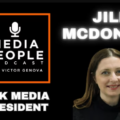
Last week, Canada’s largest circulation newspaper, The Toronto Star, was sold off, after 128 years of publishing, to private interests. The price tag was a stunningly low $52MM.
It’s a sign of the times: advertising revenue for the newspaper category has been slipping precipitously from 21% share in 2009 to 6.7% in 2018 when it posted only $946 million.
Here is the irony:
- During Covid-19, all news media has enjoyed an increase in audience, including newspaper with a rise in home-delivery subscriptions
- During Covid-19, key advertising categories that comprise the newspaper advertising base have almost stopped cold due to closures: Retail, Entertainment, Automotive
- Newspaper readership supports the premise that a single newspaper insertion is still a formidable reach-builder [1]
- 32% of Canadians age 14+ read a newspaper yesterday
- 22% of Young Canadians age 18-24 read a paper yesterday
- More people used a newspaper coupon than downloaded a coupon online
- This is even true for the 18-24 age group
- Many advertisers depend on the quick reach and response of newspaper – but that medium is slowly suffering a starvation death by Voodoo – the belief that “everyone is online” and that it means no one is elsewhere
So, there are a million stories In the Naked City
- Will NordStar Capital succeed with The Star, now unencumbered by the lash of delivering quarterly shareholder dividends?
- How long will the Groupe Médias Capitales, representing 6 major Quebec dailies including Québec City, live on with only Saturday editions to garner ad revenue?
- Will there ever be a newspaper publisher who realizes that there is virtually no revenue model for a stand-alone news website?
- Who will publish the junior hockey team photos in Cornerbrook now that the Western Star is defunct?
- How long will the $600 million federal fund to the Canadian Periodical Fund keep journalism afloat?
- Will anyone ever figure out how to get Google and Facebook to pay fairly for the content they parlay into billions of ad dollars?
In the meantime, many media planners whose clients enjoy great results from newspaper advertising are charged with the big question: after the newspapers die, what next?
Sources Used:
[1] Vividata Spring 2020
– An op-ed by Mary Rizza


